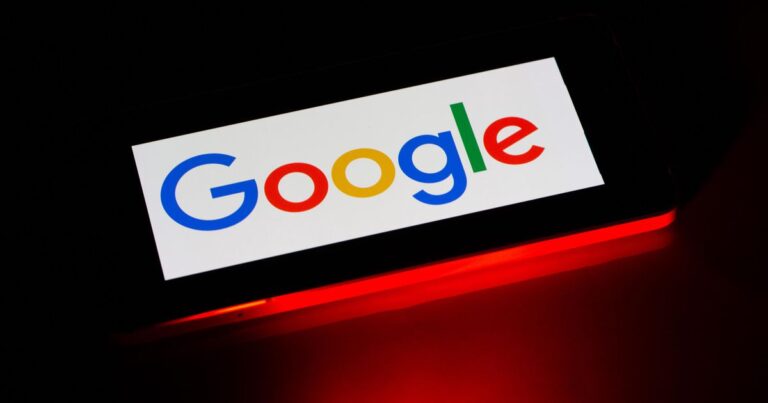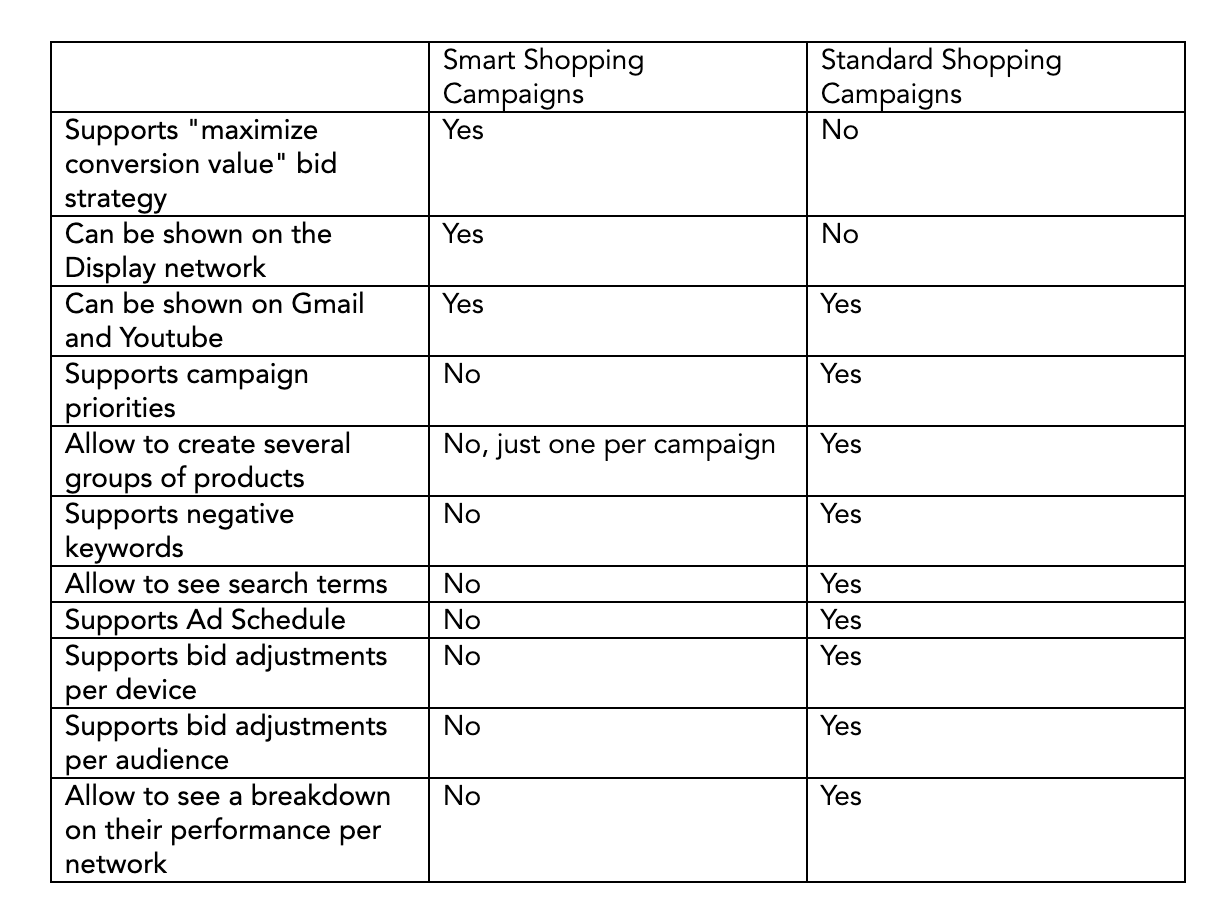
Google confirms Standard Shopping campaigns will remain available
Standard Shopping campaigns will be supported for the foreseeable future, Ginny Marvin, ads product liaison at Google, confirmed during PPC Chat (on February 17) and via Twitter.
Here is a table comparing Smart Shopping and Standard Shopping campaigns.

Standard Shopping campaigns offer a set of capabilities, controls, and data that many advertisers rely on, and knowing that they’ll continue to be available will come as a relief, especially since Google has been taking away manual controls in so many areas.
In a sense, Smart Shopping campaigns are going away — they’ll be transitioned into Performance Max campaigns sometime between July and September. The continued availability of Standard Shopping campaigns means advertisers will still have this shopping-specific campaign type, even after Smart Shopping goes away.
Performance Max to absorb Smart Shopping and Local campaigns. As mentioned above, Performance Max is set to absorb Smart Shopping campaigns this summer. Local campaigns will also be rolled into Performance Max sometime between August and September. Once that occurs, advertisers will no longer be able to create new Smart Shopping or Local campaigns.
To facilitate the transition, Google Ads will offer a self-service tool for advertisers that want to move their campaigns over to Performance Max ahead of the transition window, which could give them more time for testing. The tool will be available for Smart Shopping campaigns starting in April, with support for Local campaigns starting in June.
Read more: Google confirms Standard Shopping campaigns will remain available
Google dropping follow and welcome offers in local listings
Google quietly announced in the local business forums that it will soon be deprecating the follow and welcome offers features for local business listings. Kara from Google said, “soon, customers will no longer be able to follow businesses on Google Search or the Google Maps app.”
What is going away? It is not clear when “soon” is exactly but the following feature launched in 2018, allowing searchers to follow businesses through Google Search and Google Maps. When a searcher followed a business, the business would be able to send updates from the business to the user’s “For You” tab. Then the following year, Google added welcome offers to searchers who followed those businesses for businesses to give them special offers.
Read more: Google dropping follow and welcome offers in local listings
How to avoid international SEO mistakes
International SEO has long been a hot topic for enterprise-level brands and global companies. But, the increased ease of connecting with people around the world means these tactics are becoming vital for a growing number of businesses.
International search experts Clayton Warwick and Gary Reilly of Wordbank and Jeramie Heflin of Safeguard Global recently presented a webinar that highlighted some of the most common pitfalls, and their solutions, when it comes to optimizing for searchers who live in different countries or speak different languages.
Here are three important tactics from the panel about how marketers can prevent international SEO mistakes.
Put together a persona-based international strategy
Most of these new customers are not ready to purchase from the get-go, so marketers need to guide them through relevant content and experiences before pushing for conversions. To help with this process, Heflin recommends leveraging customer personas when reaching out to international markets. This can help marketers better understand their new audience’s needs.
However, to ensure these personas accurately reflect audiences, marketers need to pay attention to international search data to quantify the market opportunity for their brands.
Optimize the international user experience
Beyond that, Reilly says marketers need to focus on optimizing for desired actions among their international audience: “For low-funnel content or conversion content, it’s a good idea to be testing a range of cultural UX considerations on key landing pages, especially when it’s a new market and you’re not 100% sure of the best type of design elements that you should use based on the target audience.”
Paying attention to the text styles, color palettes, types of images and the languages used on your landing pages can help ensure your content resonates with these new audience groups.

Ensure the technical elements are aligned
Marketers should work closely with developers when optimizing their content for international audiences as overlooked technical issues can often derail campaigns.
“Start combing through your site to see areas where you could improve your technical setup,” said Warwick. “Fill that list for your developers so they can start knocking the items out.”
To get more specific, he pointed to the importance of in-market page load speed: “We all know how important page speed is to both SEO and paid efforts. We’re not going to want to waste media dollars sending someone to a site where they’ll inevitably bounce.”
Tools such as PageSpeed Insights (shown below) can help marketers gauge their site’s performance based on Google’s Core Web Vitals and recommended loading times.

Read more: How to avoid international SEO mistakes
Amazon and Visa come to a truce over fee increases
https://searchengineland.com/amazon-will-stop-accepting-visa-payments-in-the-uk-starting-in-january-376189Amazon and Visa have come to an agreement allowing customers to continue to use Visa credit cards at Amazon websites and stores, according to Reuters. In November 2021, Amazon announced that it would no longer accept UK-issued Visa payments on Amazon.co.uk., citing high transaction fees.
Amazon customers in the UK can keep using Visa credit cards as a payment method, which means one less factor that can negatively impact sales for merchants.
Ending this feud in the UK may also be a positive indication that this battle may not occur in other markets.
Amazon reportedly considered switching its co-branded rewards credit card from Visa to Mastercard, but now that an agreement has been reached, that’s unlikely to happen. Customers that have Amazon’s co-branded Visa can continue to accumulate rewards with it, without having to open up a new line of credit, which may also help Amazon maintain its base of Prime subscribers.
Brexit-related fee increases. The European Union imposes fee limits on credit card issuers, but those restrictions no longer apply to the UK, enabling issuers to freely raise fees.
In October 2021, Visa raised its fee from 0.3% to 1.5% for online credit card payments between the UK and EU. It also increased its debit card fee from 0.2% to 1.15%. Mastercard raised its fees from 0.3% to 1.5% as well, according to BBC. “Average credit card processing fees across the industry range between 1.5% and 3.5%, according to analysts,” Shivani Tanna and Mrinmay Dey wrote for Reuters.
Last month, British lawmakers announced plans to scrutinize Visa and Mastercard’s fee hikes after the country’s payments regulator found no justification for the increases.
Read more: Amazon and Visa come to a truce over fee increases
Google Search Console performance reports data issues may impact analytics